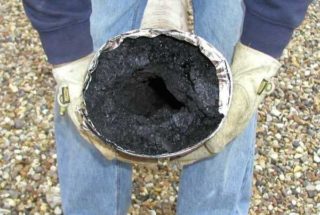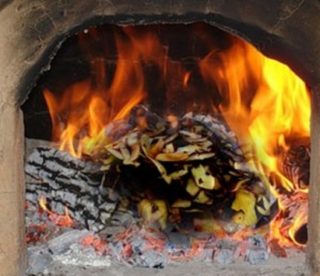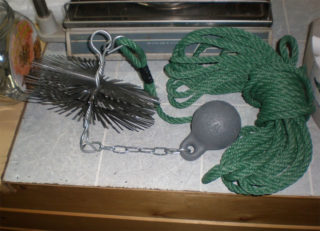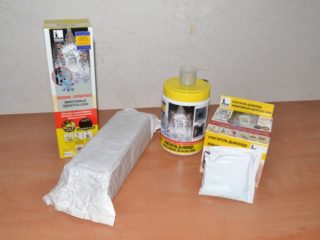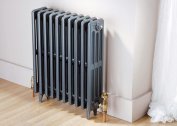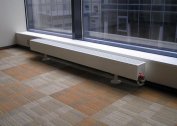Heating a country house or bath is not complete without a boiler or stove. These devices require the installation of a chimney, which during operation can become clogged with soot. In order for the stove to work properly, it is necessary to periodically clean the chimney. There are various cleaning methods - chemical, mechanical and folk methods. In the first case, cleaning is carried out in different compositions, in the second you need to climb onto the roof and lower the device into the pipe. The choice of method depends on the design of the chimney and the degree of contamination.
Causes of chimney clogging
Combustion of fuel requires sufficient carbon oxidation. This process requires high temperature and oxygen. In case of violation of one of the conditions, soot forms, which clogs the chimney.
The reasons for the formation of plaque on the pipe:
- Use for burning raw firewood. In this case, when they get into the oven, they begin to dry, which consumes a large amount of energy. As a result, temperature drops, carbon is poorly heated and soot forms.
- Burning of plastic and polyethylene, as well as scraps of plywood, particleboard and OSB. They contain substances that clog the chimney.
- Weak traction. An insufficient pipe height leads to it, the conversion of the combustion process to decay and accumulation of soot deposits.
Pay attention to the type of fuel. Christmas tree and pine form soot faster, but it is not always possible to use expensive oak and hardwood. In this case, it is recommended to take firewood without tar and dry them well.
Chimney cleaning methods
Before cleaning the chimney pipe from soot, select the appropriate method. There are only three of them: mechanical, chemical and manual cleaning.
When mechanical, a ruff is pushed into the chimney, which knocks soot from the walls. This method can not always be used, since not every pipe provides good access. In addition, all the contents of the pipes are poured down, after which garbage must be removed.
In the chemical method, powders and logs are used. They are laid in the furnace. Under the influence of temperature, substances are released that soften the soot and it flies into the pipe or falls down. Such funds are best used for prophylaxis, when there is little soot deposits.
Folk methods are also used to clean pipes. The problem of soot formation is handled with salt or potato peelings.
If professional cleaning is required, you can contact the fire department and call a specialist. The quality of work will be at the highest level, but you will have to pay for the services.
Mechanical cleaning
This method of cleaning pipes involves the use of additional tools. The most common devices are ruffles. They come in different diameters for specific chimneys. The brush-brush is put on the end of a long and flexible cable, a metal ball can be attached under it for easier passage down. The structure descends into the pipe and rises, as a result, soot is cleaned from the walls.
Before you clean the chimney in the stove with your own ruff, you should take care of technical safety. When working on the roof, you need to provide insurance so as not to fall. Gloves, glasses and respiratory protection are also required. A respirator is needed, because when dusting, small particles of dust form in the mouth and nose.
Not every type of chimney can be cleaned from the roof. Sometimes you have to clean the chimney from a sandwich pipe.In this case, bottom cleaning is required using a brush on the flexible hose. Professional pipe cleaners use special vacuum cleaners to collect soot, which crumbles during operation.
Before cleaning the chimney pipe in a private house, you should first place a container in the fireplace in which the combustion products will fall off.
Dry cleaning
If the chimney in the country house is not too clogged, you can use various chemical compositions to remove a small layer of soot. If the chimney pipe is brick, such substances will allow mechanical cleaning less often. As an independent cleaning agent, they are used for chimneys made of ceramic or stainless steel.
The periodic use of dry cleaning of chimneys of stoves and fireplaces from soot allows you to make it softer, after which the residues are easier to remove mechanically. The combination of these two methods will keep the chimney without plaque for a long time.
Among the most popular tools for cleaning pipes from soot, the following can be distinguished:
- Comedian. This is a Czech preparation, which is sold in paper bags in the form of granules. In a preheated oven, you need to put a package on the wood without breaking it. During combustion, substances will be released that will effectively clean the pipes. It is recommended to use when the soot layer does not exceed 2 mm.
- Log. Available under the names Chimney Sweep and others. Boxes will vary in appearance depending on the manufacturer. The rules for use are the same - logs must be laid in a well-heated oven. In the process of burning smoke will be emitted, softening the soot. It will disappear or fall down.
- Powders for pipe cleaning. Available in packaged powder form. The package should be put in a hot stove. There are both domestic and foreign production.
After applying chemical cleaning methods, check the room. The fireplace or stove must be cleaned of residual soot. It is important to note that soot deposits may still crumble over the next few days.
Folk ways
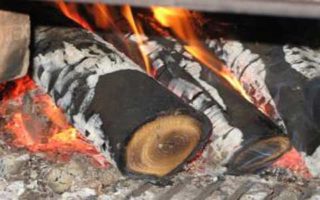
If it is impossible to clean the pipes mechanically or chemically, you can use folk remedies. The simplest of them is the firebox of an already preheated stove with aspen wood. The flame from them is hotter, soot instantly burns. But this method can not be used with a large plaque - soot can explode and damage the chimney. Therefore, before cleaning the chimney, you should inspect it. Aspen is recommended for prevention. It is enough to put a couple of logs to ordinary fuel when kindling.
There are safer ways to clean the chimney with folk remedies. A kilogram of table salt or a bucket of potato peelings is placed in a hot and heated oven and heated. They must first be dried so as not to lower the temperature in the furnace. The action of the funds will be milder than from chemicals.
Determining the cleaning time
Over time, plaque forms on the pipes from any materials. It must be cleaned, otherwise the chimney will not work efficiently. When clogged, the effect of backdraft is formed and smoke enters the room, not the street. This can lead to failure of the furnace.
When choosing a cleaning time, you need to pay attention to the following factors:
- Downtime. When was the last time cleaning, in what way.
- The design of the chimney. How to clean the pipes. The smoothness of the walls is also taken into account.
- What fuel is used. Were raw firewood used for the firebox? Did they throw plastic and other garbage into the stove.
There are a number of signs by which you can understand that you need to clean the chimneys and chimneys from soot.
- The color change of the smoke.With a clean chimney, almost transparent smoke enters the street. If it starts to blacken, soot has accumulated in the pipe, which must be removed.
- Change the color of fire in the firebox. Under normal conditions, it should be light orange; firewood should characteristically crackle. If an orange color appears, the chimney should be cleaned.
The easiest and most reliable way is a preventive check of the chimney by specialists. They use special weights for this, which are placed in the pipe. If they easily pass to the furnace, there is no precipitation or they are minimal. In case of obstruction, urgent cleaning is required.
Consequences of uncleaned chimneys
A stove or fireplace carries a potential fire hazard. For this reason, when working with such heaters, it is imperative to observe safety measures, which include periodic cleaning of pipes.
The main consequences of uncleaned chimneys:
- Fire. If there is a large accumulation of soot, fire may occur in the ventilation pipes.
- Reduced heating system efficiency. Plaque leads to a decrease in the heat capacity of the pipe and a weak smoke output. As a result, the house will be poorly heated and there is a risk of smoke entering the room.
- Health problems in humans and pets. With poor cleaning, soot and other dust particles accumulate in the pipes that enter the respiratory and visual organs. They can cause serious illness in residents. In addition, chimney channels clogged with soot poison with carbon monoxide all people and animals in the room.
- Explosions. Soot tends to explode with large accumulation, so it must be removed periodically.
To keep your home safe and healthy, preventative pipe cleaning should be done. The frequency of the procedure depends on the type and material of the chimney, as well as the frequency of its use.
